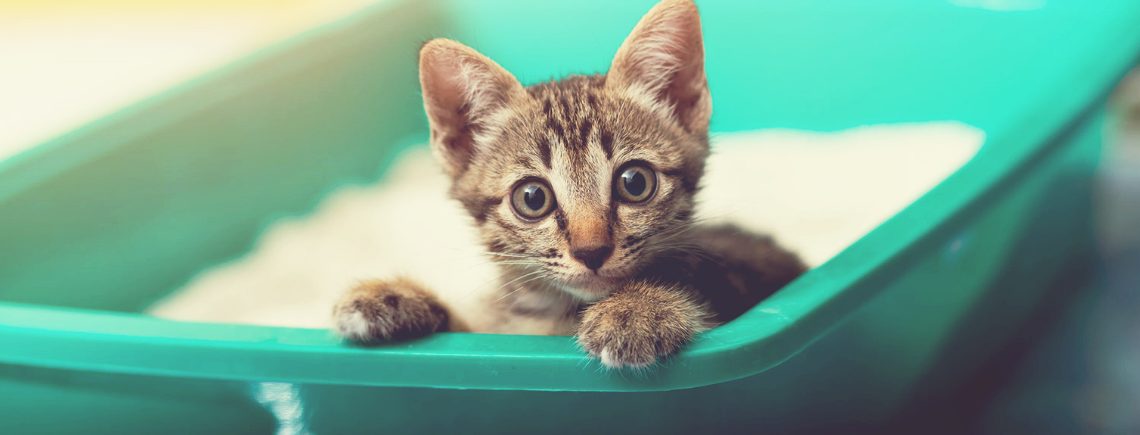How to House Train Your Kitten
Young kittens would have learned how to use a litter box by watching their mother, however if they have not been trained yet, you will need to start a training routine as soon as possible to get her used to her litter box. It is always best to start training straight away as soon as you bring them home, but don’t worry-cats are very smart and tend to learn new things very quickly!
In this blog post we’ll show you what equipment you’ll need, a step by step guide on teaching your kitten to use the litter box, and how to keep your litter box clean!
Kitten Training Essentials
Before you begin teaching your kitten to use her litter box, make sure you have the essential equipment ready to go:
1. Litter Tray
Large litter boxes could be too big and intimidating for a small kitten, so opt for a litter tray that they can easily walk into. If you have adult cats also living in your home, they will need litter boxes that are full-size, but your kitten will require a smaller one to begin with.
Bare in mind that as your kitten grows over time, so will the litter tray. The litter tray should be approximately 1 ½ times her length, so make sure to size up as your kitten grows to ensure she is comfortable and happy.

Your cat will want some privacy when using their litter box so make sure it is placed in a convenient but quiet area, away from water and feeding bowls.
When training kittens, it is best to make sure their litter tray is kept downstairs. Forcing them to go upstairs every time they need to use their litter box may lead to litter box avoidance.
2. Litter
You can’t have a litter box without any litter! Choosing the right litter is just as important as choosing the litter tray when house training your kitten. For young kittens, avoid using clumping litters as they can cause gastrointestinal upset if ingested. Hold off using them until they are at least 4 months old. Check out kitten friendly litters such as KITTYFRIEND Antibacterial Non-Clumping.
If your kitten has allergies, we recommend choosing a litter that is dust-free, such as VAN CAT Classic Cat Litter.
Some kittens may dislike scented litter, so when you are starting her toilet training, opt for unscented such as KITTYFRIEND Classic
3. Litter Mat
Litter mats can help prevent litter getting everywhere as they are designed to capture any small pieces of litter left on your cat’s paws when they step out of their litter tray. A litter mat should be big enough in relation to the litter tray, and should be placed close to it so your cat will immediately step on the mat when they’re finished.

House Training your Kitten
Your cat will want to use their toilet facilities shortly after they eat, so follow these simple steps to help them into a routine:
Five or ten minutes after your kitty has eaten, place them into a clean litter tray.
- Show your kitten where her litter tray is and let her give it a sniff.
- Allow a little time for them to settle down, as it may take some time for their bowels to begin their work. If they try to wander off, carefully return them to their litter tray and stoke them to encourage them to stay
- When they are finished, they may tidy up. Allow them to do this, and encourage them to leave the litter tray.
- Your cat will soon find this to be their routine, and will eventually only use their litter tray.
Never scold your kitten if she has an accident; instead, place her straight in the box if it looks like she is about to eliminate. Always praise her when she does the right thing, such as giving a treat. Make sure to clean any soiled areas on your carpet since the smell since your kitten may be encouraged to go again in the same spot. Avoid products containing ammonia as your cat may perceive this as being similar to urine.
Keeping Clean
It’s important for your kitty’s comfort levels that her litter tray is kept clean. Try to scoop your kitten’s litter box right after she uses it. You don’t want her developing an avoidance to her box when she’s learning to toilet train. Add some clean litter after scooping to maintain a litter depth of round 2 to 3 inches. This is ensure your kitten has plenty of room to dig.
Once your kitty is a bit older and has gotten the hang of her box, you can clean out daily rather than each time it is used.
Avoiding Accidents
- Remove any materials in the house that can be mistaken for something to be buried- kittens can mistake a fluffy throw for grass and urinate on it.
- Unneutered kittens are also likely to mark areas when they begin to mature. Kittens can start maturing sexually at around 5 months for Females and 6 months for Males.
- When cats are about to do something, they start darting around the place to try and find somewhere safe. Usually, they will go behind things or into corners, so keep an eye on them as they are roaming around. As time goes on, you can become more lenient as they should have figured out where to go.
- Putting them frequently in the litter, getting them neutered and watching out for signs will help avoid accidents.
Any more questions? We can help!
There are range of different cat litters, litter boxes and mats available and our team in-store are available to help you to find the one that is most suitable to your kitty’s needs. If you’re still looking for any advice on house training, one of our pet care advisors would be more than happy to help.

